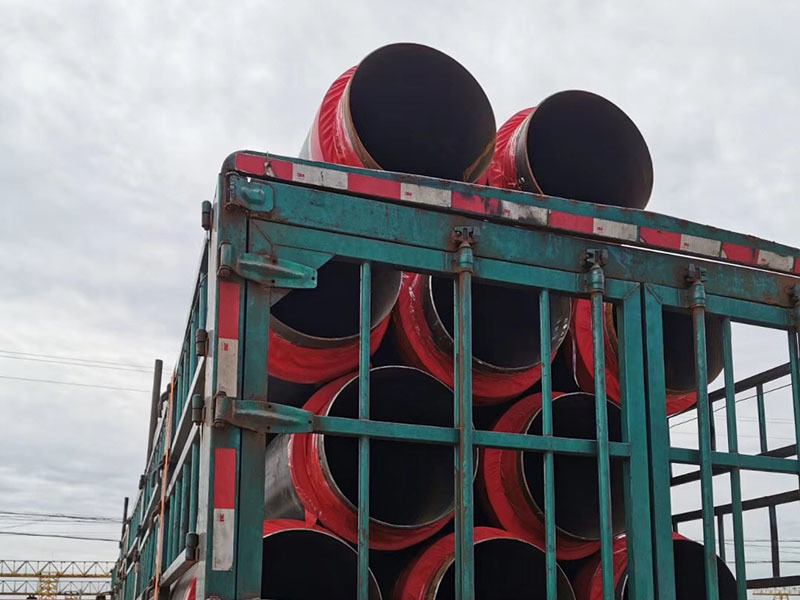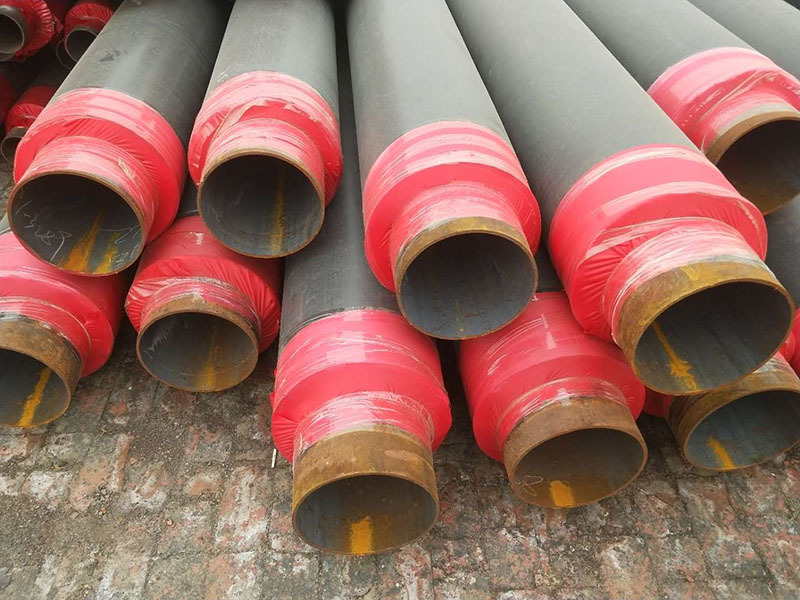A Deep Dive into the Technology of Inner Epoxy Outer Polyurethane Insulation Pipes
Release time:
2025-06-02
A Deep Dive into the Technology of Inner Epoxy Outer Polyurethane Insulation Pipes Introduction to Inner Epoxy Outer Polyurethane Insulation Pipes In the modern construction and insulation industry, **inner epoxy outer polyurethane insulation pipes** stand out as a transformative technology. These pipes are engineered for superior thermal efficiency, corrosion resistance, and longevity. As energy
A Deep Dive into the Technology of Inner Epoxy Outer Polyurethane Insulation Pipes
Introduction to Inner Epoxy Outer Polyurethane Insulation Pipes
In the modern construction and insulation industry, **inner epoxy outer polyurethane insulation pipes** stand out as a transformative technology. These pipes are engineered for superior thermal efficiency, corrosion resistance, and longevity. As energy efficiency becomes a paramount concern in building design and infrastructure, understanding the intricacies of this advanced piping solution can provide significant advantages.
Understanding the Composition of Insulation Pipes
To appreciate the technology behind these pipes, it's essential to dissect their composition and functionality.
The Role of Epoxy in Insulation
Epoxy resin serves as the foundational component for the inner lining of the pipes. Its chemical structure allows it to bond tightly with various substrates, creating a **seamless barrier** against moisture and chemicals. The **benefits of epoxy** in this context include:
- **Exceptional Adhesion:** Ensures a robust bond with the pipe surface.
- **Chemical Resistance:** Protects against aggressive environmental factors.
- **Thermal Stability:** Maintains insulation properties across a wide temperature range.
The Functionality of Polyurethane in Pipe Insulation
The outer layer of polyurethane complements the inner epoxy with added insulation and durability. This material is renowned for its **flexibility and resilience**, making it ideal for external environments. Key attributes include:
- **Impact Resistance:** Protects against physical damage during installation and use.
- **Low Thermal Conductivity:** Enhances insulation efficiency, reducing energy loss.
- **UV Stability:** Ensures long-lasting performance under sunlight exposure.
Manufacturing Process of Inner Epoxy Outer Polyurethane Insulation Pipes
The production of inner epoxy outer polyurethane insulation pipes involves several meticulous steps, ensuring that each pipe meets stringent industry standards.
Step 1: Pipe Preparation
Manufacturers begin by selecting high-grade base materials, which are cleaned and prepped to promote optimal adhesion.
Step 2: Application of Epoxy Lining
The inner epoxy layer is applied through advanced techniques such as **spraying or dipping**. This step is critical, as the epoxy must cure properly to form a strong bond with the base material.
Step 3: Polyurethane Coating
Once the epoxy has fully cured, the outer polyurethane layer is applied. This can be accomplished using techniques like **hot spray application**. The right temperature and pressure are crucial to achieving an even coating.
Step 4: Quality Control and Testing
Before the pipes are shipped, they undergo rigorous quality testing. This includes checks for thermal performance, chemical resistance, and physical integrity to ensure they meet or exceed industry standards.
Applications of Inner Epoxy Outer Polyurethane Insulation Pipes
The versatility of inner epoxy outer polyurethane insulation pipes makes them suitable for various applications in diverse industries.
1. HVAC Systems
In heating, ventilation, and air conditioning systems, these pipes are used to maintain optimal temperatures while minimizing energy loss. Their insulating properties contribute significantly to energy efficiency.
2. Refrigeration Systems
For refrigeration systems, the insulation provided by these pipes prevents energy loss and helps maintain stable temperatures, which is critical for food preservation and industrial processes.
3. Plumbing and Water Supply
In plumbing systems, these pipes ensure water delivery remains efficient and sanitary. The epoxy lining minimizes the risk of contamination, while the polyurethane exterior withstands environmental stresses.
4. Oil and Gas Industry
In the oil and gas sector, the resistance to corrosive materials and extreme temperatures makes these pipes invaluable for transporting fluids safely and efficiently.
Benefits of Inner Epoxy Outer Polyurethane Insulation Pipes
The advantages of using inner epoxy outer polyurethane insulation pipes cannot be overstated.
Enhanced Energy Efficiency
Due to their low thermal conductivity, these pipes reduce energy consumption significantly, leading to **lower operational costs**.
Longevity and Durability
With excellent resistance to corrosion, chemicals, and physical damage, these pipes have a long lifespan, reducing the need for frequent replacements and repairs.
Environmental Benefits
By improving energy efficiency and reducing waste, these pipes contribute positively to environmental sustainability. Their production and end-of-life disposal can be managed with minimal ecological impact.
Challenges and Considerations
While inner epoxy outer polyurethane insulation pipes offer numerous benefits, there are challenges and considerations to keep in mind.
1. Initial Cost
The upfront investment in these advanced insulation pipes may be higher than traditional options. However, the long-term savings in energy efficiency can offset these initial costs.
2. Installation Expertise
Proper installation is crucial to ensure the performance of these piping systems. It is essential to engage trained professionals who understand the nuances of working with these materials.
3. Environmental Impact of Production
While the end-use of these pipes is eco-friendly, the production process must be managed responsibly to mitigate any environmental concerns associated with the use of chemicals in manufacturing.
Future Trends in Insulation Pipe Technology
The landscape of insulation technology is continually evolving. As industries strive for greater sustainability, innovation in materials and manufacturing processes is on the rise.
Smart Insulation Solutions
The integration of smart technology into insulation solutions is gaining traction. These technologies enable real-time monitoring of temperature and energy efficiency, allowing for proactive maintenance and optimization.
Recyclable Materials
Research into using recyclable and biodegradable materials for pipe insulation is underway. This could lead to even more environmentally friendly options in the future.
Nanotechnology in Insulation
The application of nanotechnology could revolutionize insulation performance, offering enhanced thermal resistance and reduced material usage, paving the way for even more efficient systems.
FAQs About Inner Epoxy Outer Polyurethane Insulation Pipes
1. What are the primary benefits of using inner epoxy outer polyurethane insulation pipes?
The primary benefits include enhanced energy efficiency, exceptional durability, and reduced environmental impact.
2. How do these pipes compare to traditional insulation materials?
They generally offer better thermal performance, longevity, and resistance to environmental factors compared to traditional insulation materials.
3. Can inner epoxy outer polyurethane insulation pipes be recycled?
While the recyclability of these pipes depends on the specific materials used, there is ongoing research into more sustainable production methods.
4. What industries benefit most from these insulation pipes?
Industries such as HVAC, plumbing, refrigeration, and oil and gas significantly benefit from the unique properties of these insulation pipes.
5. Are there any maintenance requirements for these pipes?
Routine inspections are recommended to ensure integrity, especially in critical applications, but they typically require less maintenance than traditional materials.
Conclusion
Inner epoxy outer polyurethane insulation pipes represent a significant advancement in piping technology, offering a unique blend of durability, efficiency, and environmental sustainability. As industries continue to prioritize energy efficiency and eco-friendly practices, the adoption of these innovative pipes is likely to increase. Embracing this technology not only enhances operational efficacy but also contributes positively to broader environmental goals. Understanding and implementing these advanced insulation solutions can position companies at the forefront of the industry, driving innovation and sustainability in future projects.
keyword:
Previous article
Related News






